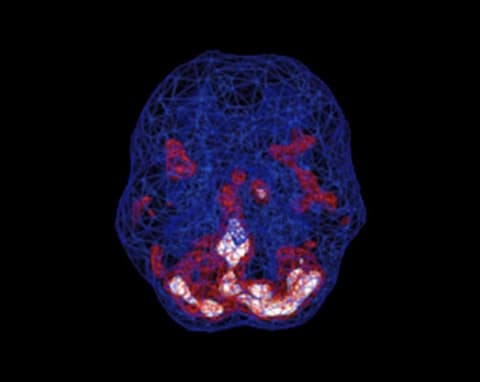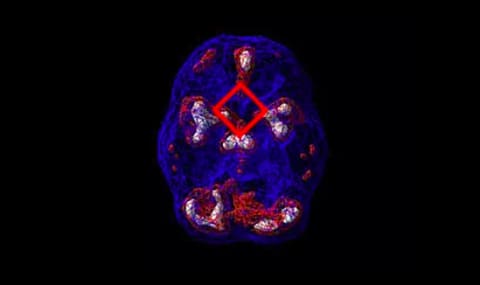Advertisement
How Emotional Trauma Affects The Brain, According To A Neuroscientist Psychiatrist


Surviving a chaotic upbringing, living through a natural disaster, experiencing verbal abuse—it's common knowledge that these types of trauma can cause lasting emotional scars. But did you know that they may also affect the physical functioning of your brain? And that these brain changes can increase your risk for anxiety, panic attacks, PTSD, sleep problems, and more?
At Amen Clinics, we have conducted several brain SPECT imaging studies on trauma survivors to analyze their brain function. SPECT is a brain-imaging technology that measures blood flow and activity in the brain and shows three things: areas of the brain with healthy activity, areas with too little activity, and areas with too much activity.
How trauma affects your brain activity.
Basal ganglia
These structures are part of the brain's limbic, or emotional, system. They are involved with motivation, habit formation, pleasure, integrating feeling and movement, and anxiety.
The basal ganglia help set the body's anxiety level and cause you to jump when you get startled, shake when you're nervous, or freeze when you're afraid.
Overactivity in this brain region is associated with increased anxiousness, tension, fear, and awareness.
Amygdala
This almond-shaped structure in the temporal lobes is involved in emotional and fear responses. Excessive activity in the amygdala can generate angst and anxiety.
Anterior cingulate gyrus (ACG)
Located deep in the brain's frontal lobes, the ACG acts as the brain's "gear shifter" because it helps you shift your attention from thought to thought or from one behavior to another.
When there is heightened activity in the ACG, people tend to get stuck on distressing thoughts and worries. It can also make people rigid thinkers with a tendency to be argumentative and to hold grudges.
Thalamus
Part of the brain's limbic system, the thalamus is involved in sensory gating and emotional processing. It relays information from the outside world to the brain.
Excessive activity here is associated with increased sensory awareness, which can make you feel overwhelmed by everyday sights and sounds. It has also been noted in people with chronic pain.
Right temporal lobe
In the 2015 study noted above, heightened activity was also found in the right temporal lobe but only in some of the trauma survivors. The temporal lobes, located on either side of the brain below the temples and behind the eyes, are involved in mood stability, memory, learning, and visual and auditory processing.
In most people, the right temporal lobe is involved in understanding facial expressions and verbal intonations, which are critical social skills that help you understand other people's intentions.
Too much activity here is associated with misreading cues from other people, meaning you may think someone is angry when they are simply tired, or you may think someone is threatening when they are merely excited.
What abnormal brain activity actually looks like.
As you can see, trauma is associated with changes in activity levels in the brain that are linked to detrimental issues, such as anxiety, fear, negative thinking, heightened awareness, feeling on edge, pain, and more.
On SPECT scans, overactivity in these areas creates a pattern that resembles a diamond. Here are two brain SPECT scans from Amen Clinics. One shows a healthy brain, the other shows the diamond pattern of overactivity often seen in trauma survivors.
Healthy "Active" Brain SPECT Scan
The most active areas are in the cerebellum at the back/bottom of the brain.

Diamond Pattern SPECT Scan
The diamond pattern shows increased activity in the anterior cingulate (top of diamond), basal ganglia/amygdala (middle), and thalamus (bottom).

Healing the brain after emotional trauma.
The good news is the brain can heal following emotional trauma. Several therapies can help calm an overactive brain including the following:
- Eye movement desensitization and reprocessing (EMDR). This noninvasive treatment helps people eliminate the emotional aspects tied to memories of traumatic events. Experts believe it works by altering the manner in which the brain processes memories and other information. A 2014 review2 of scientific findings showed that as many as 90% of trauma survivors overcame symptoms after just three EMDR sessions. (More on EMDR here.)
- Trauma-focused cognitive behavioral therapy: Since the 1990s, TF-CBT has been used to help trauma survivors gain relief from feelings of anxiety, depression, guilt, and more.
- Natural supplements: Magnesium (find a list of mbg's favorites, here) theanine, GABA, and ashwagandha are among the nutraceuticals that have calming, anti-anxiousness properties.
The takeaway.
While it's important to understand that trauma can affect how your brain functions, it's also essential to know there are things you can do to calm overactivity. For more ways to support your brain, check out the five things I suggest doing every day for better brain health.

















